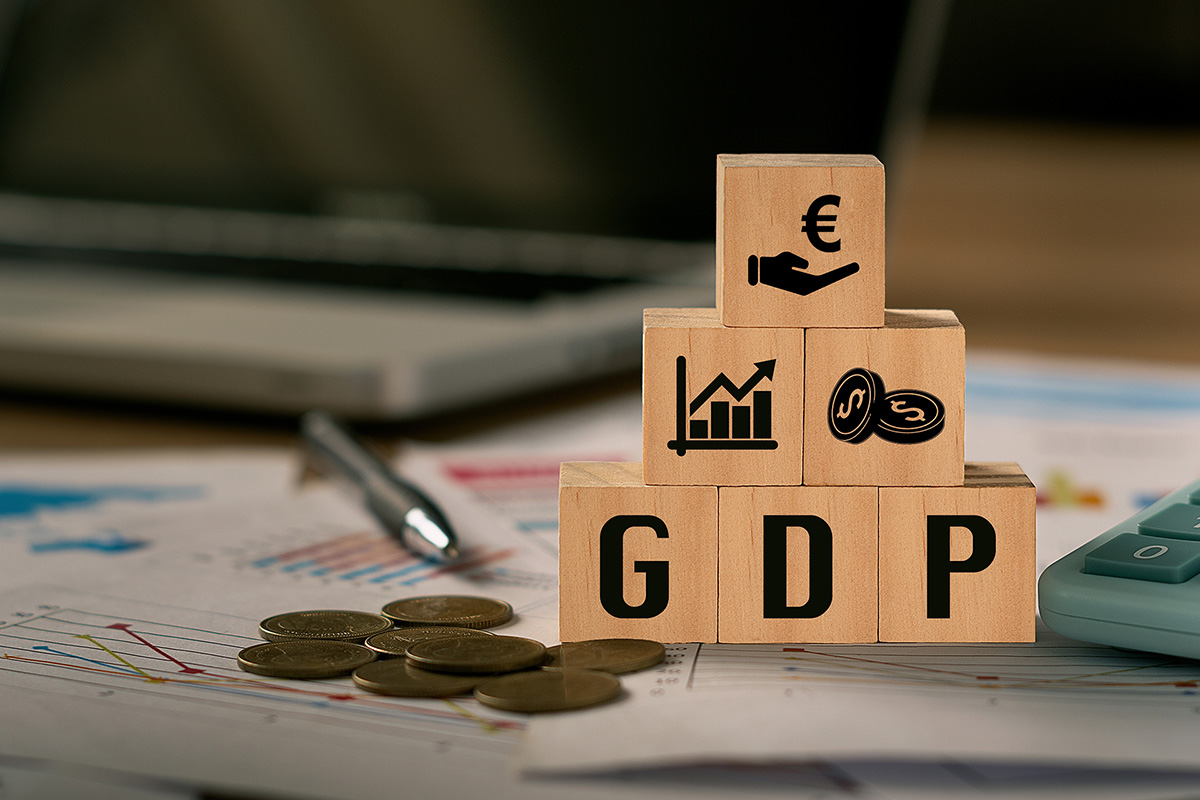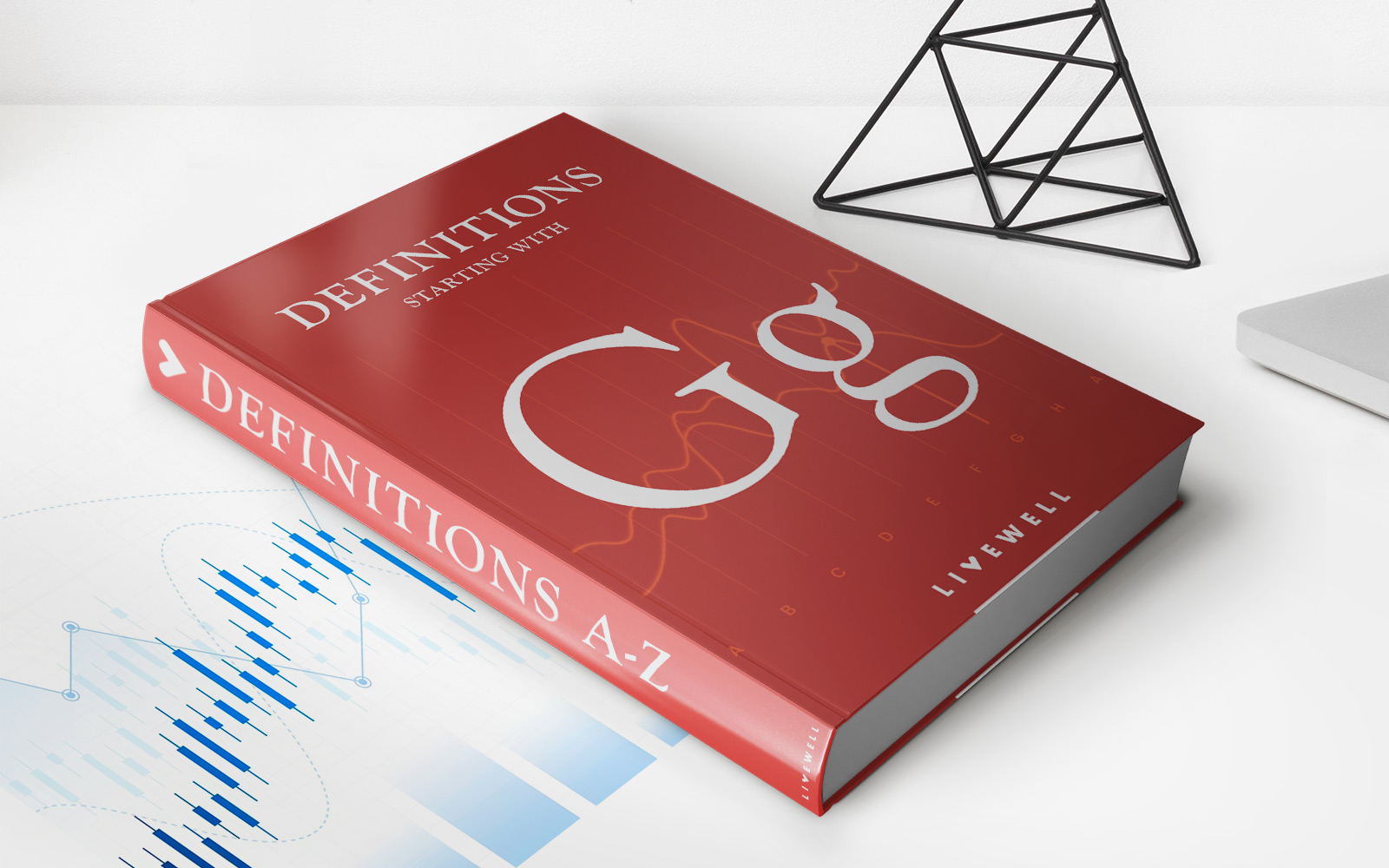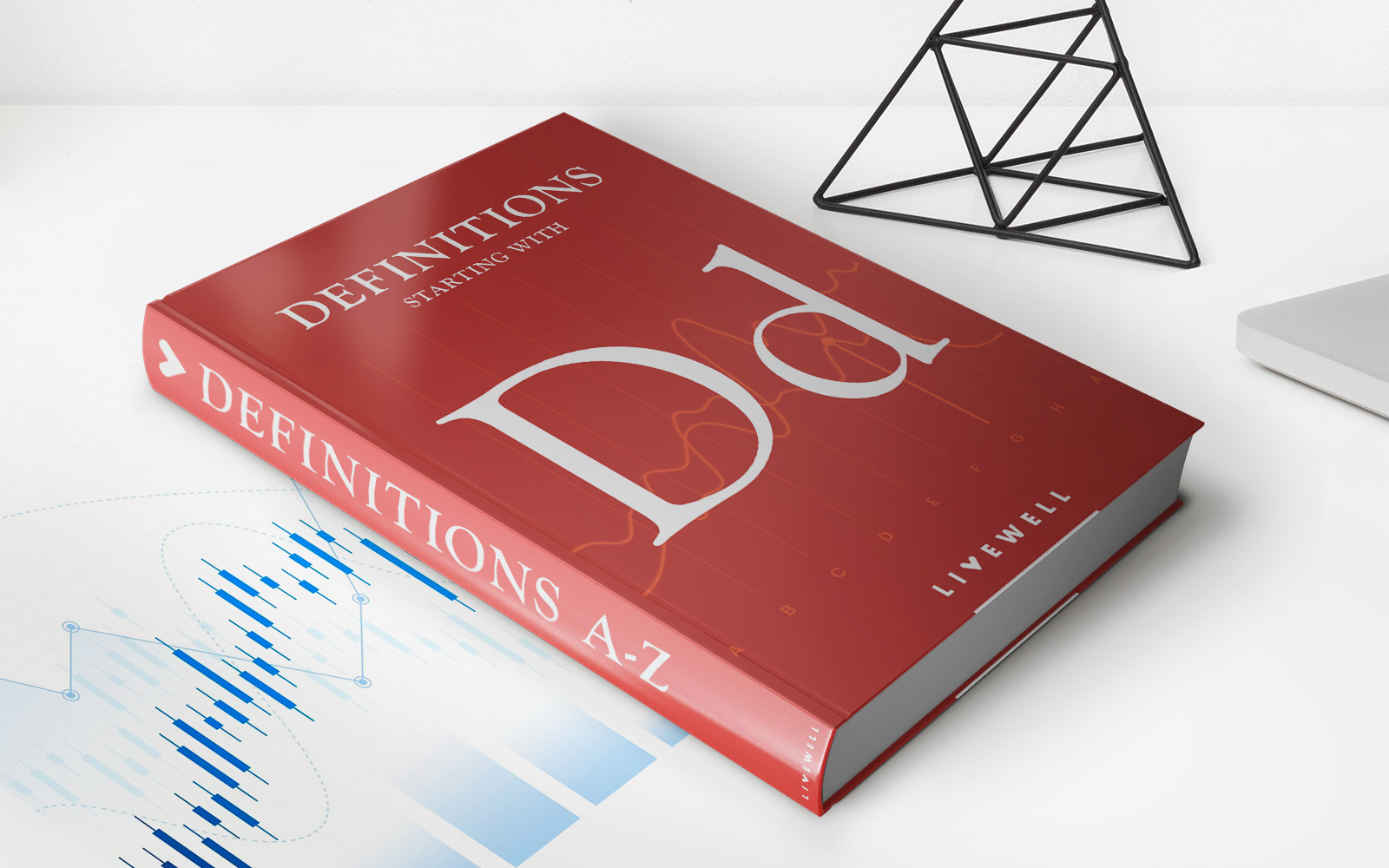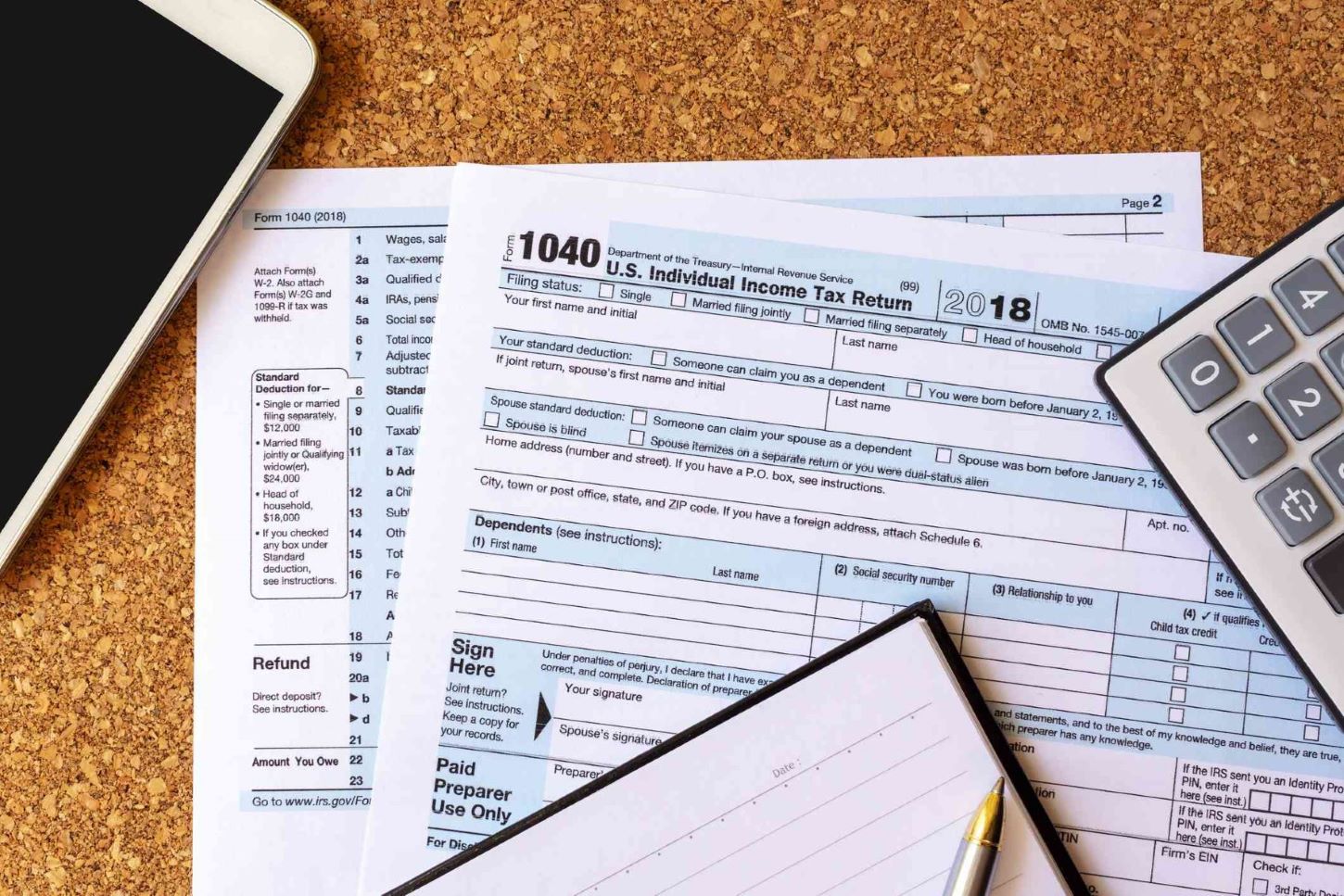

Finance
What Is GDP (Gross Domestic Product)?
Published: October 29, 2023
Learn about GDP (Gross Domestic Product), an essential concept in finance, and its impact on economic growth and development.
(Many of the links in this article redirect to a specific reviewed product. Your purchase of these products through affiliate links helps to generate commission for LiveWell, at no extra cost. Learn more)
Table of Contents
Introduction
When it comes to measuring the economic performance of a country, one term that often comes up is Gross Domestic Product (GDP). GDP is a key indicator used by economists, policymakers, and investors to assess the health and growth of a nation’s economy. It serves as a measure of the market value of all final goods and services produced within a country in a given period.
GDP provides valuable insights into the overall economic activity and productivity of a nation. It helps policymakers make informed decisions, businesses evaluate market conditions, and individuals gauge the overall well-being of their country. Understanding GDP is crucial for anyone interested in finance and economics.
In this article, we will explore the concept of GDP, its components, how it is calculated, and its importance in assessing economic growth. We will also discuss the limitations of GDP as a measure of economic welfare and compare it with another related indicator, Gross National Product (GNP). Additionally, we will dive into GDP per capita and examine some of the criticisms surrounding GDP as a comprehensive measure of well-being.
By the end of this article, you will have a clear understanding of what GDP is and why it is such a crucial factor in analyzing economic performance. So let’s dive in and explore the world of GDP!
Definition of GDP
Gross Domestic Product (GDP) is a measure of the total monetary value of all final goods and services produced within a country’s borders during a specific period, typically a year. It represents the overall economic output and is widely used as a key indicator of a country’s economic health and growth.
GDP captures both the production and consumption aspects of an economy. It includes the value of goods and services produced by businesses, government entities, and individuals within the country’s borders. However, it only considers the market value of final goods and services, excluding intermediate goods used in the production process.
The concept of GDP originated in the 1930s as a response to the need for a standardized measure of economic activity. It was developed to track and analyze the performance of national economies, allowing for comparisons across countries and over time.
GDP is often divided into three main categories: consumption, investment, and government spending. Consumption refers to the expenditures made by individuals and households on goods and services. Investment includes business spending on capital goods, such as machinery and equipment, as well as changes in inventories. Government spending comprises the expenditures made by the government on goods and services.
In addition to these expenditure components, GDP can also be calculated through the income approach, which considers the total income earned by individuals and businesses in the economy. This approach includes wages, salaries, rents, profits, and other forms of income.
GDP is typically reported in nominal terms, which means it does not account for inflation. However, to assess real economic growth, economists adjust GDP for inflation, resulting in real GDP. Real GDP provides a more accurate picture of economic performance by removing the effects of price changes over time.
Overall, GDP is a powerful tool that allows economists and policymakers to monitor and analyze the economic performance of a country accurately. It provides a snapshot of the level of economic activity, allowing for comparisons between countries and measuring progress over time.
Now that we have a clear understanding of what GDP is, let’s dive deeper into its components and how it is calculated.
Components of GDP
Gross Domestic Product (GDP) can be broken down into four main components, each representing different types of economic activities that contribute to the overall value of goods and services produced within a country. These components are:
- Consumption (C): This component represents the expenditures made by individuals and households on final goods and services. It includes purchases of durable goods (such as cars and appliances), nondurable goods (such as food and clothing), and services (such as healthcare and education). Consumer spending is a significant driver of economic growth and often comprises the largest portion of GDP.
- Investment (I): Investment refers to the spending by businesses on capital goods, such as machinery, equipment, and buildings, that are used in the production of goods and services. It also includes changes in inventories. Investment spending is an important indicator of business confidence and future economic growth. It can vary over time based on factors such as interest rates, business expectations, and technological advancements.
- Government Spending (G): This component includes the expenditures made by the government on goods, services, and infrastructure. It encompasses spending on defense, education, healthcare, infrastructure projects, and public administration. Government spending is influenced by fiscal policies and is often used as a tool for economic stimulus or to address specific societal needs.
- Net Exports (NX): Net exports represent the difference between a country’s exports and imports. Exports include the value of goods and services produced domestically and sold to other countries, while imports represent the value of goods and services purchased from other countries. A positive net export indicates a trade surplus (exports exceed imports), while a negative net export indicates a trade deficit (imports exceed exports). Net exports reflect the international competitiveness of a country’s industries and can be influenced by factors such as exchange rates, tariff policies, and global demand.
These four components, C (Consumption), I (Investment), G (Government Spending), and NX (Net Exports), together make up the GDP equation, commonly known as the expenditure approach:
GDP = C + I + G + NX
Each component plays a crucial role in shaping the overall level of economic activity within a country. Changes in consumer spending patterns, business investment decisions, government policies, and international trade dynamics can all impact the relative contributions of these components to GDP.
Now that we understand the components of GDP, let’s explore how GDP is calculated and its significance in measuring economic growth and prosperity.
Calculation of GDP
Calculating Gross Domestic Product (GDP) involves aggregating the value of all final goods and services produced within a country’s borders during a specific period. There are a few different approaches used to calculate GDP, including the expenditure approach, income approach, and production approach.
The most commonly used method is the expenditure approach, which sums up the total spending on final goods and services within the economy. This approach breaks down GDP into the four components we discussed earlier: consumption (C), investment (I), government spending (G), and net exports (NX).
To calculate GDP using the expenditure approach, we add up the total spending in each category. We start with consumption (C), which includes all the expenditures made by individuals and households on goods and services. This can be measured using data from surveys, consumer spending reports, and retail sales data.
Next, we account for investment (I), which includes business spending on capital goods, changes in inventories, and residential investment. This data can be obtained through business surveys, financial reports, and construction data.
The third component is government spending (G), which includes all the expenditures made by the government on goods, services, and infrastructure. Government budgets and expenditure reports provide the necessary data for this category.
Finally, we consider net exports (NX), which represent the difference between a country’s exports and imports. Export and import data collected by customs departments and international trade organizations help determine the net export value.
Once we have the values for consumption (C), investment (I), government spending (G), and net exports (NX), we can sum them up to calculate GDP:
GDP = C + I + G + NX
Another approach to calculate GDP is the income approach, which considers the total income earned by individuals and businesses in the economy. This approach includes wages, salaries, rents, profits, and other forms of income. However, it is worth noting that the income approach and expenditure approach should yield the same GDP figure if calculated correctly.
The production approach, on the other hand, measures GDP by adding up the value-added at each stage of production. It accounts for the flow of goods and services through various industries and sectors.
Regardless of the approach used, GDP calculations provide valuable insights into the level of economic activity within a country. They help policymakers, researchers, and businesses understand the performance and growth of the economy, identify trends, and make informed decisions.
Now that we have explored how GDP is calculated, let’s delve into the importance of GDP as a measure of economic growth and development.
Importance of GDP
Gross Domestic Product (GDP) plays a vital role in measuring and assessing the economic growth and development of a country. It serves as a key indicator for policymakers, economists, and investors, offering valuable insights into the overall health and performance of an economy. Here are some key reasons why GDP is important:
- Indicator of economic health: GDP provides a measure of the total economic output of a country, reflecting the level of activity within various sectors. It helps policymakers gauge the overall health of an economy and identify trends, such as periods of expansion or recession. By monitoring GDP growth rates over time, policymakers can make informed decisions and implement appropriate measures to promote economic stability and growth.
- Comparison between countries: GDP allows for meaningful comparisons of economic performance between countries. It serves as a benchmark to assess the relative size and productivity of different economies. By comparing GDP per capita or GDP growth rates, policymakers can identify areas of strength or weakness and learn from the experiences of other countries.
- Investment and business decisions: GDP plays a crucial role in business and investment decisions. Companies use GDP data to assess market conditions and evaluate potential opportunities for growth. Investors also rely on GDP figures to make informed decisions about allocating their resources across different countries and sectors.
- Policy formulation and evaluation: GDP serves as a vital tool for policymakers in formulating and evaluating economic policies. It helps them understand the impact of fiscal and monetary policies on economic growth and stability. By analyzing GDP data, policymakers can identify areas of the economy that require attention and implement targeted policies to stimulate growth, such as infrastructure development, tax reforms, or investment incentives.
- Social welfare and living standards: While GDP alone does not provide a comprehensive measure of well-being and quality of life, it is often associated with higher standards of living. Countries with higher GDP per capita tend to have better access to healthcare, education, and infrastructure. By tracking GDP growth, policymakers can aim to improve the overall living standards of the population.
It is important to note that GDP is not a perfect measure and has its limitations, such as not fully capturing informal economic activities, income distribution, and environmental sustainability. However, despite these limitations, GDP remains a crucial yardstick for assessing economic performance and guiding policy decisions.
Now that we understand the importance of GDP, let’s explore its limitations as a comprehensive measure of economic welfare.
Limitations of GDP
While Gross Domestic Product (GDP) is widely used as an indicator of economic health and growth, it has several limitations that need to be considered when analyzing the overall well-being of a country’s economy. Here are some key limitations of GDP:
- Excludes non-market activities: GDP only measures the value of goods and services exchanged in the market, excluding non-market activities such as household production, volunteer work, and informal economic activities. This exclusion can lead to an underestimation of the overall economic activity and fails to capture the full extent of a country’s productive capacity.
- Does not account for income distribution: GDP does not provide information about how income is distributed among different segments of the population. Even if GDP per capita is high, it does not necessarily imply equal distribution of wealth. A high GDP may mask significant income inequality, which can affect the overall well-being of individuals and households.
- Does not consider environmental degradation: GDP does not account for the depletion of natural resources or the costs associated with environmental damage. Economic activities that contribute to GDP growth, such as deforestation or pollution, may have long-term negative consequences for the environment and future generations, but GDP alone does not reflect these costs.
- Does not measure the quality of goods and services: GDP does not capture the quality or welfare improvements associated with goods and services. It treats all expenditures as equal, regardless of whether they contribute to overall well-being or result in negative social outcomes.
- Ignores non-monetary factors: GDP does not account for factors that contribute to well-being but are not reflected in monetary transactions. This includes aspects such as leisure time, health and education outcomes, social capital, and cultural heritage. These non-monetary factors play a crucial role in determining overall quality of life but are not adequately captured by GDP.
Recognizing these limitations, there have been efforts to develop alternative measures such as the Genuine Progress Indicator (GPI) or the Human Development Index (HDI) that attempt to provide a more comprehensive assessment of well-being and sustainable development.
While GDP remains an important metric for economic analysis, policymakers and researchers need to consider these limitations and complement GDP with other indicators to obtain a more accurate understanding of a country’s well-being and progress.
Now, let’s explore the difference between GDP and Gross National Product (GNP).
GDP vs GNP (Gross National Product)
Gross Domestic Product (GDP) and Gross National Product (GNP) are both measures used to assess the economic performance and size of a country’s economy. While they are similar in many ways, there is a fundamental difference between the two.
GDP measures the total value of all final goods and services produced within a country’s borders, regardless of whether the production is done by domestic or foreign entities. It focuses on the economic activity that takes place within a country’s geographical boundaries. GDP is a widely used indicator for economic growth and is often reported as a quarterly or annual figure.
On the other hand, GNP takes into account the total income earned by a country’s residents, both domestically and abroad. It includes the value of goods and services produced by a country’s residents, regardless of whether the production takes place within or outside the country’s borders. GNP considers the nationality of the individuals or entities involved in the production process.
The main distinction between GDP and GNP is the inclusion of income earned by a country’s residents abroad (income from foreign investments, salaries earned by citizens working abroad, etc.) in GNP but not in GDP. This means that GNP reflects the economic contributions of a country’s citizens, regardless of their physical location.
To calculate GNP, we can use the following formula:
GNP = GDP + Net income from abroad
The net income from abroad is the difference between the income earned by a country’s residents from foreign economic activities and the income earned by foreign residents within the country. This net income can be positive or negative, depending on whether the country earns more from its investments abroad or pays more to foreign investors.
It is important to note that in most cases, the difference between GDP and GNP is relatively small, especially for countries where the foreign income component is not significant. However, for countries heavily involved in foreign investments and with large numbers of citizens working abroad, the difference can be substantial.
Both GDP and GNP provide valuable insights into the economic activity of a country, but they offer different perspectives. GDP focuses on the production that takes place within a country’s borders, providing a measure of economic output. GNP, on the other hand, considers the income earned by a country’s residents, offering a broader view of a country’s economic involvement on a global scale.
Now let’s explore another important indicator related to GDP – GDP per capita.
GDP per Capita
Gross Domestic Product per capita (GDP per capita) is a measure that provides insight into the average economic output per person in a country. It is calculated by dividing the total GDP of a country by its population. GDP per capita is often used as an indicator of the standard of living and economic well-being of a country’s residents.
This measure allows for comparisons between countries with different population sizes, providing a better understanding of the relative economic conditions and prosperity of the population. A higher GDP per capita generally indicates a greater level of economic development and a higher standard of living for the residents.
GDP per capita is calculated using the following formula:
GDP per capita = GDP / Population
For example, if a country has a GDP of $1 trillion and a population of 50 million, the GDP per capita would be $20,000. This means that, on average, each person in the country generates $20,000 worth of economic output.
GDP per capita provides policymakers and economists with valuable insights into the relative economic conditions and living standards of different countries. It can be used to compare the economic performance of countries and track changes in the standard of living over time.
However, GDP per capita alone does not provide a complete picture of the well-being of a population. It does not take into account factors such as income distribution, access to essential services like healthcare and education, and quality of life indicators. Therefore, it is important to consider various socio-economic factors alongside GDP per capita to gain a comprehensive understanding of the living standards and quality of life in a country.
In addition, GDP per capita should be examined in the context of other factors such as inflation, purchasing power parity (PPP), and income inequality to gain a more accurate assessment of the economic conditions and disparities within a country.
While GDP per capita provides valuable information, it is not a definitive measure of individual well-being, happiness, or overall societal progress. Complementary indices such as the Human Development Index (HDI) and other socio-economic indicators should be considered together to obtain a more comprehensive understanding of a country’s overall development.
Now that we have explored GDP per capita, let’s discuss some of the criticisms surrounding GDP as a measure of economic welfare.
Criticisms of GDP as a Measure of Economic Welfare
While Gross Domestic Product (GDP) is widely used as a measure of economic activity and growth, it is not without its criticisms. GDP has several limitations that have led to discussions about its effectiveness as a comprehensive measure of economic welfare. Here are some of the key criticisms:
- Excludes non-market activities: One major criticism is that GDP only accounts for market activities and excludes non-market activities such as unpaid household work, volunteer work, and informal economic activities. This exclusion can result in an inaccurate representation of the overall economic well-being and fails to capture important contributions to society.
- Does not reflect income distribution: GDP does not provide information about how income is distributed within a country. A high GDP per capita does not necessarily indicate equal distribution of wealth or improved living standards for all individuals. Income inequality can have significant social and economic implications, yet GDP does not capture this crucial aspect of economic welfare.
- Does not consider environmental sustainability: GDP does not take into account the depletion of natural resources, environmental degradation, or the costs associated with pollution and climate change. Economic growth that harms the environment or depletes resources may be reflected positively in GDP figures but can have long-term negative consequences for the well-being of current and future generations.
- Focuses on quantity, not quality: GDP emphasizes the production of goods and services without considering their quality, sustainability, or societal impact. It does not account for negative externalities, such as pollution or social costs, associated with certain production methods. This focus on quantity can lead to a skewed emphasis on growth at the expense of other important factors, such as human well-being, health, and happiness.
- Does not capture non-monetary factors: GDP fails to capture non-monetary aspects of well-being, such as leisure time, access to quality education and healthcare, social cohesion, and cultural heritage. These factors are essential for overall societal progress and individual satisfaction but are not adequately measured by GDP alone.
Recognizing these criticisms, there have been efforts to develop alternative indicators that aim to provide a more holistic and comprehensive measurement of economic welfare, such as the Genuine Progress Indicator (GPI), the Human Development Index (HDI), or the Sustainable Development Goals (SDGs). These alternative measures consider a broader range of factors beyond GDP to provide a more nuanced understanding of societal well-being and progress.
While GDP remains a useful measure for assessing economic activity and growth, it should be interpreted alongside these other indicators to obtain a more complete picture of economic welfare and societal progress.
Now, let’s wrap up our discussion on GDP and its limitations.
Conclusion
Gross Domestic Product (GDP) is a widely used measure to assess and track the economic performance and growth of a country. It provides valuable insights into the level of economic activity, productivity, and overall well-being of a nation. However, GDP has its limitations and should be interpreted with caution.
Throughout this article, we have explored the definition of GDP, its components, and how it is calculated. We have discussed the importance of GDP in measuring economic health and comparing countries, but also highlighted its limitations as a comprehensive measure of economic welfare.
GDP can be affected by factors such as non-market activities, income distribution, environmental sustainability, and the quality of goods and services. It does not capture important aspects of well-being, such as non-monetary factors and income inequality. Therefore, it is essential to supplement GDP with other indicators to obtain a more accurate and comprehensive assessment of a country’s economic welfare and societal progress.
Efforts have been made to develop alternative indicators that consider a broader range of factors, such as the Genuine Progress Indicator (GPI), the Human Development Index (HDI), and the Sustainable Development Goals (SDGs). These indicators aim to provide a more holistic view of economic welfare that goes beyond GDP.
In conclusion, while GDP remains a valuable tool for assessing economic performance, policymakers, economists, and researchers should use it in conjunction with other indicators to gain a more comprehensive understanding of economic welfare, sustainability, and overall societal progress.
By considering the limitations of GDP and embracing alternative indicators, we can strive towards a more balanced and comprehensive assessment of economic well-being and work towards creating economies that prioritize not just growth, but also equity, sustainability, and human thriving.














